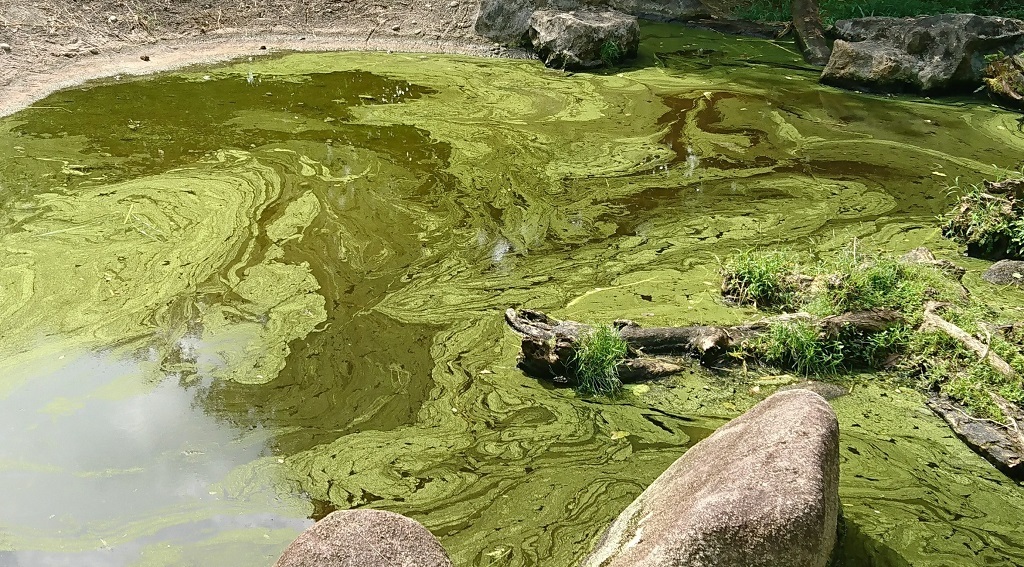
Scottish dog deaths leads to toxic algae warning
Dog owners are being warned to be aware of blue-green algae alerts, following the deaths of two pets in Scotland.
Professor Laurence Carvalho, a freshwater ecologist at the Centre for Ecology & Hydrology (CEH), in Edinburgh, said reports of the dogs’ deaths demonstrates the importance of rapid recording of sightings of toxic algal blooms.
Blue-green algae, which also poses a health risk to humans, animals, birds and fish who come into contact with it or ingest infected water, has flourished during Scotland’s long hot, dry summer.
Professor Carvalho specialises in the study of algal blooms and water quality. He helped devise an app called ‘Bloomin’ Algae’ for the public to register sightings and help speed up response actions.
David O’Connor, chairman of the Glen Wyvis Distillery, said his family were left heartbroken after their cocker spaniel Bell consumed the algae on the banks of the River Conon.
And in Argyllshire, there was a report of the death of a dog after ingesting water from Loch Awe.
The professor said these incidents highlighted the importance of dog walkers, boaters, anglers and others to record sightings of blue-green algae, which are also known as ‘cyanobacteria’.
The app enables users to submit a photo of the bloom and its location, so the potential risks to people and animals can be gauged. The locations are then passed to the Scottish Environment Protection Agency, so it can inform local authorities.

Help is wanted to record sightings of blue-green algae, which are also known as ‘cyanobacteria’
Prof Carvalho said: ‘Blue-green algae flourish in warmer weather. It has been a particular problem this summer because not only has it been very warm but it has also been very dry, which means they have not been flushed out of water courses by rain.
‘The app provides an early warning system and speeds up the process of local authorities or landowners putting up signs at sites where there is blue-green algae, to warn the public of the risks.
‘It will also help us understand the drivers of growth of these algae, such as the impact of climate change.’
Blue-green algae are microscopic, but clump together in visible colonies up to a few millimetres in size that can rise to the surface and form thin wispy green blooms or thick, paint-like scums.
While the bright green appearance of algae in water is enough to put off adults from going near it, Prof Carvalho said children and animals were potentially vulnerable because they may be unaware of the risks it poses.
Prof Carvalho, who has been working with Health Protection Scotland to update Scottish Government guidance on how to deal with harmful algal blooms, said: ‘Animals will drink from water if they are thirsty and it seems dogs are particularly affected because they seem to be attracted by the smell of the algae.’
When ingested, the toxins can cause damage to the liver or nervous system in humans and animals. People who have swam through or swallowed algal scum can suffer from skin rashes, eye irritation, vomiting, diarrhoea, fever and muscle and joint pain, though there is no evidence that these have led to long-term effects or deaths among people in the UK.
The Bloomin’ Algae app was created last year in collaboration with the Scottish Environment Protection Agency, Health Protection Scotland, the Environment Agency in England and Public Health England.
You can download the app for Apple products or Android.
You can view sightings HERE.
TAGS

